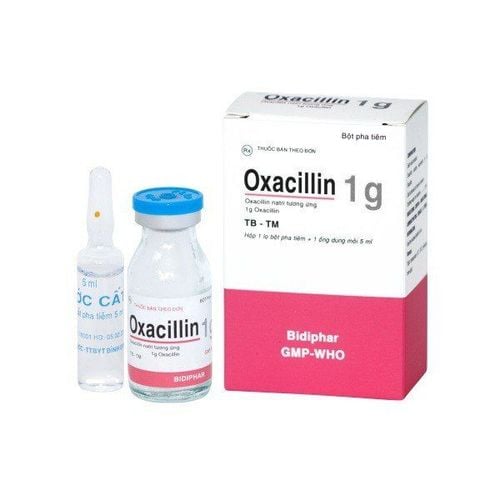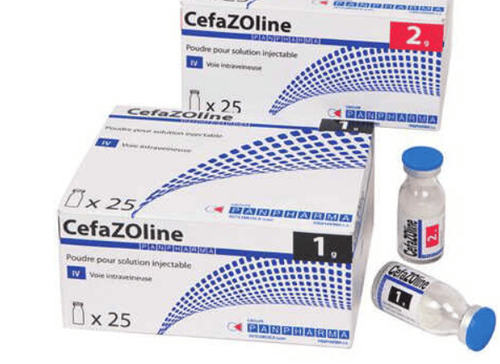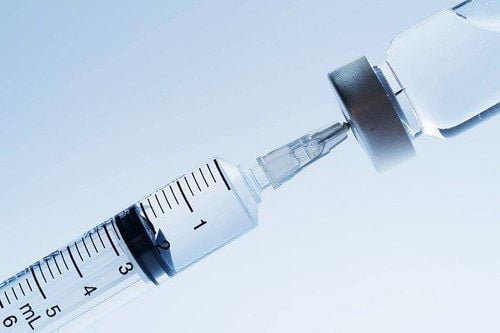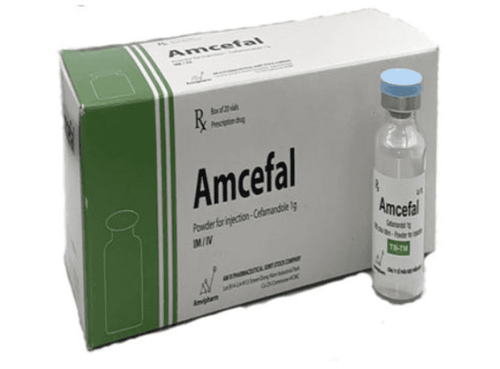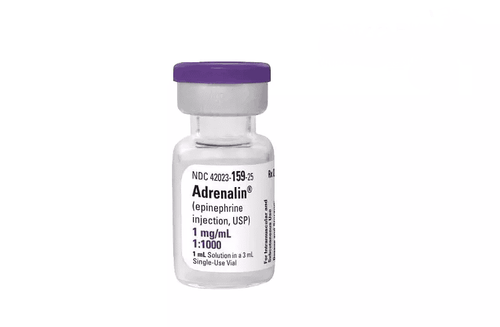This is an automatically translated article.
The article was written by Dr. Truong Ngoc Hai - Resuscitation Doctor - Emergency Department - Vinmec Central Park International General HospitalFluid overload is a very common problem in patients with sepsis (NKH). Fluid overload increases mortality in patients after cardiac and noncardiac surgery, cancer and acute kidney injury, and patients on invasive and noninvasive mechanical ventilation [6]. Therefore, fluid resuscitation in septic shock should be managed promptly but with appropriate guidance, avoiding overly aggressive, prolonged and uncontrolled fluid resuscitation.
According to the SSC guidelines, “establishing an infusion line and initiating fluid resuscitation are the top priorities when managing patients with septic shock” [20]. It must be recognized that prompt perfusion is one of the most important potentially life-saving treatments in NKH. However, there is increasing evidence that positive fluid balance is associated with higher mortality in patients with NKH [1],[24],[33],[43],[47].
Fluid resuscitation in patients with CKD has a short hemodynamic effect (usually 60 minutes). If the cause of hypotension is vascular dysfunction, increased vascular permeability, and vasodilation, it should be corrected using vasopressors rather than repeated fluid resuscitation. Recognizing this phenomenon early, many studies have been performed to evaluate the effects of positive fluid balance and patient mortality outcomes.
Table 3. Studies on fluid balance and outcomes in patients with NKH
| Tác giả | Năm | Cỡ mẫu | Thiết kế | Kết quả |
| Alsous [2] | 2000 | 36 | Đoàn hệ hồi cứu | Cân bằng dịch ít nhất 1 ngày âm tính trong 3 ngày đầu điều trị là yếu tố độc lập tiên lượng sống còn (RR 5,0; KTC 95%: 2,3 – 10,9; p < 0,001). |
| Vincent [50] | 2006 | 1177 | Đoàn hệ tiến cứu | Cân bằng dịch dương là yếu tố nguy cơ độc lập cho tử vong trong hồi sức (OR 1,1 mỗi L; KTC 95%: 1,0 – 1,1; p = 0,001) |
| Murphy [36] | 2009 | 212 | Đoàn hệ hồi cứu | Không đạt được mục tiêu điều trị bù dịch hạn chế là nguy cơ độc lập cho tử vong nội viện ở bệnh nhân NKH có tổn thương phổi (OR 6,13; KTC 95% 2,77 – 13,57; p < 0,001) |
| Boyd [8] | 2011 | 778 | Phân tích hồi cứu | TPV cân bằng dịch thấp nhất có tử vong thấp hơn các TPV khác sau 12 giờ (HR 0,569; KTC 95% 0,405 – 0,799) và sau 4 ngày (HR 0,466; KTC: 95% 0,405 – 0,799) |
| Smith [48] | 2012 | 164 | Quan sát tiến cứu | Bệnh nhân còn sốc vào ngày thứ 3 được truyền dịch nhiều hơn có tỷ lệ tử vong 90 ngày thấp hơn (40% so với 62%, p = 0,03) dù có cùng điểm SAPS 2 như nhau. |
| Micek [33] | 2013 | 325 | Đoàn hệ hồi cứu | TPV cân bằng dịch dương cao nhất ngày 8 sau sốc liên quan độc lập với tử vong nội viện (OR 1,66; KTC 95%: 1,39 – 1,98; p = 0,004) |
| Sadaka [43] | 2014 | 350 | Đoàn hệ hồi cứu | Sau khi hiệu chỉnh mức độ nặng, TPV cân bằng dịch cao hơn tại 24 giờ liên quan tăng tử vong nội viện |
| Sirvent [47] | 2015 | 42 | Quan sát tiến cứu | Cân bằng dịch dương tính cao hơn ở nhóm tử vong |
| Kelm [24] | 2015 | 405 | Đoàn hệ hồi cứu | Quá tải dịch kéo dài liên quan độc lập với tăng tử vong nội viện (OR 1,92; KTC 95%: 1,16 – 3,22; p = 0,01) |
| Acheampong [1] | 2015 | 173 | Quan sát tiến cứu | Cân bằng dịch dương liên quan tử vong hồi sức (HR hiệu chỉnh 1,014; KTC 95% 1,007 – 1,022 mỗi ml/Kg dịch; p < 0,001) |
| Oliveira [18] | 2015 | 116 | Đoàn hệ hồi cứu | Cân bằng dịch dương cao hơn giữa 24 giờ và 48 giờ chẩn đoán NKH liên quan độc lập tử vong nội viện (OR 3,19; KTC 95% 1,19 – 8,54; p = 0,021) |
On the contrary, some studies show that active infusion is beneficial. Smith et al. [48] performed a prospective multicenter observational study of 164 patients that found that patients with septic shock after 72 h of receiving larger volumes of fluids had a lower 90-day mortality rate, although despite having the same severity score at admission. However, the mean volume of fluid replacement (7.5 L during the first 72 h of shock) was lower than in similar studies [39]. A study by Shen et al. [46] showed that living patients received a higher volume of fluid than dead patients. Note that Shen et al.'s study [46] only included patients with negative fluid balance. Furthermore, mortality benefit was observed in highly resuscitated patients who remained in shock for three or more days as reported by Smith et al [48]. The cut-off points reported in this study were lower than the expected high volume of fluid in clinical trials.
Micek et al. [33], Sakr et al. [44] showed that fluid balance in the first 24 hours and cumulative fluid balance were significantly lower in the surviving group than in the dead group with p = 0.003 and p < 0.001. Sirvent et al [47] also showed a large positive fluid balance in patients who died at 48, 72, and 96 hours. The difference was not statistically significant at 24 h. A study by Boyd et al. [8] showed that patients with low fluid balance at 12 h and day 4 had a lower 28-day mortality rate compared with patients with higher fluid balance.
From the above studies, we can see that positive fluid balance at various times from the first 24 hours in resuscitation to cumulative fluid balance on discharge day has the ability to predict mortality risk. Patients with higher cumulative fluid balance have a higher mortality rate than patients with low cumulative fluid balance. This result seems reasonable considering the hemodynamic aspects and organ dysfunction. However, the studies on fluid resuscitation and fluid balance in the above patients with septic shock/shock are still limited. First, most of the studies included in the analysis were retrospective studies. Second, the timing of fluid balance assessment and subsequent follow-up time varied widely between studies. Third, the cutoff points for volume and fluid balance also varied between studies.
CONCLUSION
In patients with septic shock, fluid administration during initial hemodynamic resuscitation remains an important therapeutic challenge. Physicians face many open questions regarding the choice of type, dose, and duration of intravenous fluids.
Four main indications for infusion: resuscitation with hemodynamically stable fluids, intravenous fluids to maintain and replace total body water - electrolytes, drug preparation (antibiotics) and nutrition through a vein. Fluid management strategies in critically ill patients include the "four D's": drug (Drug), duration (Duration), dose (Dosing), and de-escalation.
During the treatment of patients with septic shock, four phases of treatment include: (1) Life-saving phase, the goal of which is the minimum acceptable blood pressure to maintain life; (2) Optimal phase, with the goal of increasing cardiac output in proportion to organ demand; (3) The stabilization phase, focusing mainly on support and prevention of complications; and (4) The de-escalation phase, when it is assessed that the patient should be released from the ICU. Each stage requires a different treatment attitude regarding infusion.
Please dial HOTLINE for more information or register for an appointment HERE. Download MyVinmec app to make appointments faster and to manage your bookings easily.
REFERENCES:Acheampong A., Vincent J. L. (2015). "A positive fluid balance is an independent prognostic factor in patients with sepsis". Crit Care , 19, pp. 251. Alsous F., Khamiees M., DeGirolamo A., et al. (2000). "Negative fluid balance predicts survival in patients with septic shock: a retrospective pilot study". Chest , 117 (6), pp. 1749-1754. Angus D. C., Linde-Zwirble W. T., Lidicker J., et al. (2001). "Epidemiology of severe sepsis in the United States: analysis of incidence, outcome, and associated costs of care". Crit Care Med , 29 (7), pp. 1303-1310. Bai X., Yu W., Ji W., et al. (2014). "Early versus delayed administration of norepinephrine in patients with septic shock". Crit Care , 18 (5), pp. 532. Banerjee Debasree, Opal Steven M. (2017). "Age, exercise, and the outcome of sepsis". Critical care (London, England), 21 (1), pp. 286-286. Besen B. A., Gobatto A. L., Melro L. M., et al. (2015). "Fluid and electrolyte overload in critically ill patients: An overview". World J Crit Care Med , 4 (2), pp. 116-129. Besen B. A., Taniguchi L. U. (2017). "Negative Fluid Balance in Sepsis: When and How?". Shock , 47 (1S Suppl 1), pp. 35-40. Boyd J. H., Forbes J., Nakada T. A., et al. (2011). "Fluid resuscitation in septic shock: a positive fluid balance and elevated central venous pressure are associated with increased mortality". Crit Care Med , 39 (2), pp. 259-265. Bruegger D., Jacob M., Rehm M., et al. (2005). "Atrial natriuretic peptide induces shedding of endothelial glycocalyx in coronary vascular bed of guinea pig hearts". Am J Physiol Heart Circ Physiol , 289 (5), pp. H1993-H1999. Cecconi M., De Backer D., Antonelli M., et al. (2014). "Consensus on circulatory shock and hemodynamic monitoring. Task force of the European Society of Intensive Care Medicine". Intensive Care Med , 40 (12), pp. 1795-1815. Cecconi M., Hofer C., Teboul J. L., et al. (2015). "Fluid challenges in intensive care: the FENICE study: A global inception cohort study". Intensive Care Med , 41 (9), pp. 1529-1537. Cecconi Maurizio, Hofer Christoph, Teboul Jean-Louis, et al. (2015). "Fluid challenges in intensive care: the FENICE study: A global inception cohort study". Intensive care medicine , 41 (9), pp. 1529-1537. Celeita-Rodríguez Nathalia, Teixeira-Neto Francisco J., Garofalo Natache A., et al. (2019). "Comparison of the diagnostic accuracy of dynamic and static preload indexes to predict fluid responsiveness in mechanically ventilated, isoflurane anesthetized dogs". Veterinary Anaesthesia and Analgesia , 46 (3), pp. 276-288. Chelazzi Cosimo, Villa Gianluca, Mancinelli Paola, et al. (2015). "Glycocalyx and sepsis-induced alterations in vascular permeability". Critical care (London, England), 19 (1), pp. 26. Chen C., Kollef M. H. (2015). "Targeted Fluid Minimization Following Initial Resuscitation in Septic Shock: A Pilot Study". Chest, 148 (6), pp. 1462-1469. Claure-Del Granado Rolando, Mehta Ravindra L. (2016). "Fluid overload in the ICU: evaluation and management". BMC nephrology, 17 (1), pp. 109. Daniels R. (2011). "Surviving the first hours in sepsis: getting the basics right (an intensivist's perspective)". J Antimicrob Chemother , 66 Suppl 2, pp. ii11-ii23. de Oliveira F. S., Freitas F. G., Ferreira E. M., et al. (2015). "Positive fluid balance as a prognostic factor for mortality and acute kidney injury in severe sepsis and septic shock". J Crit Care , 30 (1), pp. 97-101. Dellinger R. P., Levy M. M., Rhodes A., et al. (two thousand and thirteen). "Surviving sepsis campaign: international guidelines for management of severe sepsis and septic shock: 2012". Crit Care Med , 41 (2), pp. 580-637. 20. Dellinger R. P., Levy M. M., Rhodes A., et al. (two thousand and thirteen). "Surviving sepsis campaign: international guidelines for management of severe sepsis and septic shock: 2012". Crit Care Med, 41 (2), 580-637.
21. Flythe J. E., Kimmel S. E., Brunelli S. M. (2011). "Rapid fluid removal during dialysis is associated with cardiovascular morbidity and mortality". Kidney Int , 79 (2), pp. 250-257.
22. Harrison D. A., Welch C. A., Eddleston J. M. (2006). "The epidemiology of severe sepsis in England, Wales and Northern Ireland, 1996 to 2004: secondary analysis of a high quality clinical database, the ICNARC Case Mix Program Database". Crit Care , 10 (2), pp. R42.
23. Hoste E. A., Maitland K., Brudney C. S., et al. (2014). "Four phases of intravenous fluid therapy: a conceptual model". Br J Anaesth , 113 (5), pp. 740-747.
24. Kelm D. J., Perrin J. T., Cartin-Ceba R., et al. (2015). "Fluid overload in patients with severe sepsis and septic shock treated with early goal-directed therapy is associated with increased acute need for fluid-related medical interventions and hospital death". Shock , 43 (1), pp. 68-73.
25. Laine G. A., Allen S. J., Katz J., et al. (1986). "Effect of systemic venous pressure elevation on lymph flow and lung edema formation". J Appl Physiol (1985), 61 (5), pp. 1634-1638.
26. Lee S. J., Ramar K., Park J. G., et al. (2014). "Increased fluid administration in the first three hours of sepsis resuscitation is associated with reduced mortality: a retrospective cohort study". Chest , 146 (4), pp. 908-915.
27. Levy M. M., Artigas A., Phillips G. S., et al. (2012). "Outcomes of the Surviving Sepsis Campaign in intensive care units in the USA and Europe: a prospective cohort study". Lancet Infect Dis , 12 (12), pp. 919-924.
28. Levy M. M., Dellinger R. P., Townsend S. R., et al. (2010). "The Surviving Sepsis Campaign: results of an international guideline-based performance improvement program targeting severe sepsis". Crit Care Med , 38 (2), pp. 367-374.
29. Levy M. M., Rhodes A., Phillips G. S., et al. (2015). "Surviving Sepsis Campaign: association between performance metrics and outcomes in a 7.5-year study". Crit Care Med , 43 (1), pp. 3-12.
30. Marenzi G., Lauri G., Grazi M., et al. (2001). "Circulatory response to fluid overload removal by extracorporeal ultrafiltration in refractory congestive heart failure". J Am Coll Cardiol , 38 (4), pp. 963-968.
31. Margarson M. P., Soni N. C. (2004). "Changes in serum albumin concentration and volume expanding effects following a bolus of albumin 20% in septic patients". British Journal of Anaesthesia , 92 (6), pp. 821-826.
32. Marik P. E., Linde-Zwirble W. T., Bittner E. A., et al. (2017). "Fluid administration in severe sepsis and septic shock, patterns and outcomes: an analysis of a large national database". Intensive Care Med , 43 (5), pp. 625-632.
33. Micek S. T., McEvoy C., McKenzie M., et al. (two thousand and thirteen). "Fluid balance and cardiac function in septic shock as predictors of hospital mortality". Crit Care , 17 (5), pp. R246.
34. Monnet X., Marik P., Teboul J. L. (2016). "Passive leg raising for predicting fluid responsiveness: a systematic review and meta-analysis". Intensive Care Med , 42 (12), pp. 1935-1947.
35. Mouncey P. R., Osborn T. M., Power G. S., et al. (2015). "Trial of early, goal-directed resuscitation for septic shock". N Engl J Med , 372 (14), pp. 1301-1311.
36. Murphy C. V., Schramm G. E., Doherty J. A., et al. (2009). "The importance of fluid management in acute lung injury secondary to septic shock". Chest , 136 (1), pp. 102-109.
37. O'Connor M. E., Prowle J. R. (2015). "Fluid Overload". Crit Care Clin , 31 (4), pp. 803-821.
38. Peake S. L., Delaney A., Bailey M., et al. (2014). "Goal-directed resuscitation for patients with early septic shock". N Engl J Med , 371 (16), pp. 1496-1506.
39. Prowle J. R. (2012). "Fluid resuscitation in septic shock: too much, too little or just right?". Crit Care , 16 (3), pp. 436.
40. Raimundo M., Crichton S., Syed Y., et al. (2015). "Low Systemic Oxygen Delivery and BP and Risk of Progression of Early AKI". Clin J Am Soc Nephrol , 10 (8), pp. 1340-1349.
41. Rivers E., Nguyen B., Havstad S., et al. (2001). "Early goal-directed therapy in the treatment of severe sepsis and septic shock". N Engl J Med, 345 (19), 1368-77.
42. Rivers E., Nguyen B., Havstad S., et al. (2001). "Early goal-directed therapy in the treatment of severe sepsis and septic shock". N Engl J Med , 345 (19), pp. 1368-1377.
43. Sadaka F., Juarez M., Naydenov S., et al. (2014). "Fluid resuscitation in septic shock: the effect of increasing fluid balance on mortality". J Intensive Care Med , 29 (4), pp. 213-217.
44. Sakr Y., Rubatto Birri P. N., Kotfis K., et al. (2017). "Higher Fluid Balance Increases the Risk of Death From Sepsis: Results From a Large International Audit". Crit Care Med , 45 (3), pp. 386-394.
45. Semler M. W., Wheeler A. P., Thompson B. T., et al. (2016). "Impact of Initial Central Venous Pressure on Outcomes of Conservative Versus Liberal Fluid Management in Acute Respiratory Distress Syndrome". Crit Care Med , 44 (4), pp. 782-789.
46. Shen Y., Huang X., Zhang W. (2017). "Association between fluid intake and mortality in critical ill patients with negative fluid balance: a retrospective cohort study". Crit Care , 21 (1), pp. 104.
47. Sirvent J. M., Ferri C., Baro A., et al. (2015). "Fluid balance in sepsis and septic shock as a determining factor of mortality". Am J Emerg Med , 33 (2), pp. 186-189.
48. Smith S. H., Perner A. (2012). "Higher vs. lower fluid volume for septic shock: clinical characteristics and outcome in unselected patients in a prospective, multicenter cohort". Crit Care , 16 (3), pp. R76.
49. Vincent J. L., De Backer D. (2013). "Circulatory shock". N Engl J Med , 369 (18), pp. 1726-1734.
50. Vincent J. L., Sakr Y., Sprung C. L., et al. (2006). "Sepsis in European intensive care units: results of the SOAP study". Crit Care Med , 34 (2), pp. 344-353.
51. Wiedemann H. P., Wheeler A. P., Bernard G. R., et al. (2006). "Comparison of two fluid-management strategies in acute lung injury". N Engl J Med , 354 (24), pp. 2564-2575.
52. Yealy D. M., Kellum J. A., Huang D. T., et al. (2014). "A randomized trial of protocol-based care for early septic shock". N Engl J Med , 370 (18), pp. 1683-1693.
53. Levy Mitchell M., Evans Laura E., Rhodes Andrew (2018). "The Surviving Sepsis Campaign Bundle: 2018 update". Intensive Care Medicine , 44 (6), pp. 925-928.
54. Keijzers Gerben, Macdonald Stephen PJ, Udy Andrew A, et al. (2019). "The Australasian Resuscitation In Sepsis Evaluation: FLUid or vasopressors In Emergency Department Sepsis, a multicentre observational study (ARISE FLUIDS observational study): Rationale, methods and analysis plan". 31 (1), pp. 90-96.
55. Rhodes Andrew, Evans Laura E., Alhazzani Waleed, et al. (2017). "Surviving Sepsis Campaign: International Guidelines for Management of Sepsis and Septic Shock 2016". Critical Care Medicine , 45 (3), pp. 486-552.
56. Singer Mervyn, Deutschman Clifford S., Seymour Christopher Warren, et al. (2016). "The Third International Consensus Definitions for Sepsis and Septic Shock (Sepsis-3)Consensus Definitions for Sepsis and Septic ShockConsensus Definitions for Sepsis and Septic Shock". JAMA , 315 (8), pp. 801-810.




